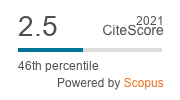Method for Reverse Engineering UML Use Case Model for Websites
DOI:
https://doi.org/10.5755/j01.itc.47.4.21264Keywords:
UML, use case diagram, activity diagram, reverse engineering, websiteAbstract
Introducing reverse engineering of UML models can alleviate the problems with inadequately documented or undocumented websites. In this paper, we analyze possibilities of reverse engineering UML use case model composed of UML use case diagram and UML activity diagrams for each use case. The proposed method enables transformation of recorded website usage into UML use case and activity diagrams. Our method is based on dynamic analysis of website usage and does not require access to websites’ internal source code. The method consists of two steps: recording of user actions in the website, and then transforming the combination of recorded activity and publicly available HTML code information into UML use case model. During experimental evaluation of the tool, two UML use case models were reverse engineered: one for moodle.if.ktu.lt website and another for researchgate.net website. Both reversed use case diagrams contained appropriate include and extend relations and generalizations between actors. Activity diagrams were generated for every use case and alternative usage scenarios were successfully combined into activity diagrams. The quality of generated models was evaluated using an anonymous questionnaire completed by 13 UML modelling experts. The results of expert evaluation are encouraging: in total, average expert evaluation score was 8,4 in a scale of ten.
Downloads
Published
Issue
Section
License
Copyright terms are indicated in the Republic of Lithuania Law on Copyright and Related Rights, Articles 4-37.





